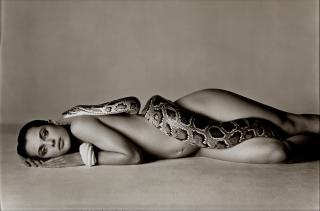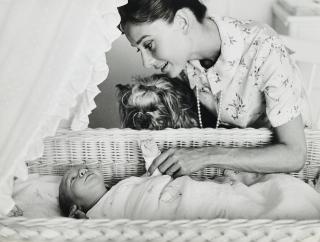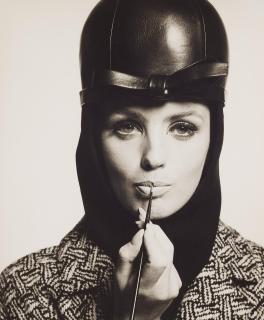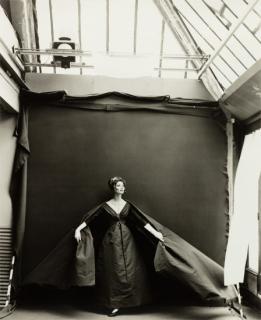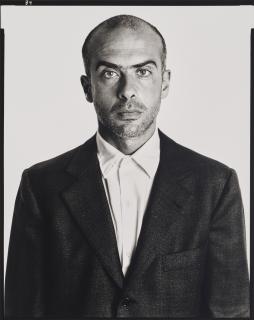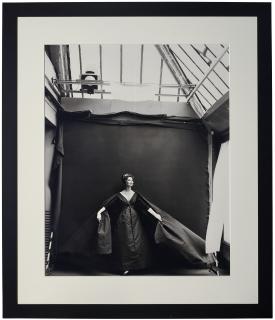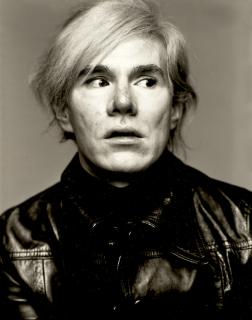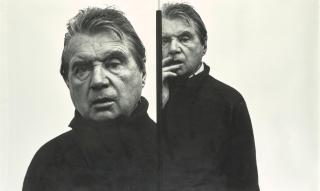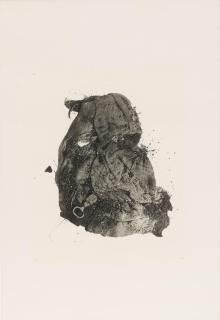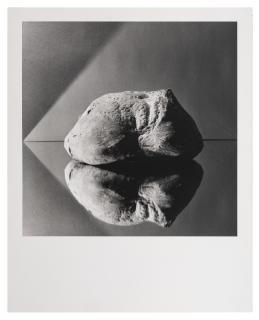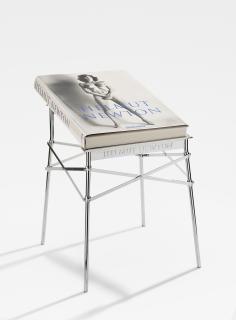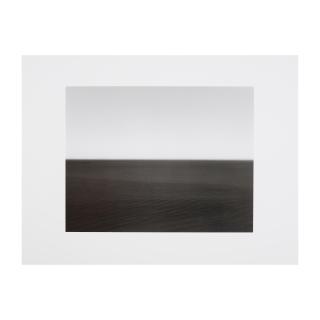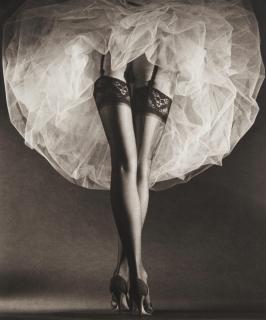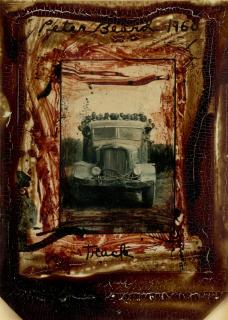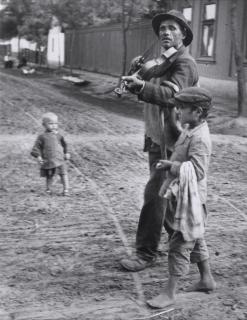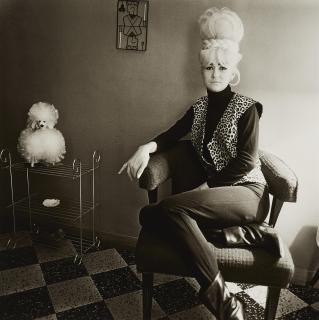Richard Avedon 1923 - 2004
The artist Richard Avedon
- US American photographer who is one of the most important of the 20th century.
- Known for his fashion photography and for portraits of public figures and people with illnesses.
- His picture, »Dovima with Elephants« , made history in fashion photography.
The photographer Richard Avedon was born on 15 May 1923 in New York City as the child of Russian-Jewish immigrants and developed an interest in photography at an early age. At the age of 12, he joined the photo club of the Young Men's Hebrew Association (YMHA) and was editor of the school magazine at his high school together with James Baldwin. In 1942, Avedon joined the US Navy, where he spent two years shooting mainly identification portraits of sailors. Around 1944, he attended the New School for Social Research to study photography under the artistic director of Harper's Bazaar magazine, Alexey Brodovit. After just one year, Brodovit hired Avedon for the magazine, for which he worked from 1945 to 1965. Thus he first became known to a broader mass as a fashion photographer, with the photographer Louise Dahl-Wolfe particularly shaping his style at that time.
Avedon was the first photographer to shoot models not in the studio as usual, but on the street, in everyday surroundings. In 1955, he made fashion photography history with the picture Dovima with Elephants: it showed the famous model Dovima in the middle of a circus setting in a black evening dress by Dior posing with two elephants. In 1965, he finished working for Harper's Bazaar and went on to work for Vogue for more than 20 years. In 1992, he became a photographer for the New Yorker. His outstanding work and connections with companies such as Calvin Klein, Revlon and Versace produced some of the most famous advertising campaigns in US history.
In the process, he was credited with blurring the lines between art and commercial photography. At the same time, Avedon opened the Richard Avedon Studio in New York in 1946 and, in addition to fashion photography, also took portraits. On the one hand, he photographed personalities from politics and culture. On the other hand, he devoted his photography to the US civil rights movement and the Vietnam War as well as to people from the US working class, mentally ill people and, last but not least, portrayed his dying father Jacob Israel Avedon. His photographs are always in black and white and stand out for their simple yet dynamic aesthetics.
Especially in later years, his style can be described as purist, as he shot many of his portraits with a large-format camera in front of a plain white canvas. His work has been exhibited at the Whitney Museum of American Art (New York) and the International Center of Photography (New York), the Corcoran Gallery of Art (Washington DC) and the Museo Guggenheim (Bilbao), among others. He received various awards for his work, including from the Royal Photographic Society, the International Center of Photography and Americans for the Arts. Richard Avedon died on 01.10.2004 in San Antonio (Texas) as a result of a cerebral haemorrhage.
Der Künstler Richard Avedon
- US-amerikanischer Fotograf, der zu den bedeutendsten des 20. Jahrhunderts zählt.
- Bekannt für seine Modefotografie sowie für Porträts von öffentlichen und erkrankten Personen.
- Sein Bild »Dovima with Elephants« schrieb Geschichte in der Modefotografie.
Der Fotograf Richard Avedon wurde am 15.05.1923 als Kind russisch-jüdischer Einwanderer geboren und entwickelte schon früh Interesse an der Fotografie. Mit 12 Jahren trat er dem Fotoclub der Young Men’s Hebrew Association (YMHA) bei und war an seiner Highschool gemeinsam mit James Baldwin Herausgeber der Schulzeitschrift. 1942 ging Avedon zur US-Marine, wo er zwei Jahre lang hauptsächlich Identifikationsporträts von Seeleuten aufnahm. Um 1944 besuchte Avedon die New School for Social Research, um unter dem künstlerischen Leiter des Magazins Harper’s Bazaar, Alexey Brodovit, ein Fotografiestudium zu absolvieren. Bereits nach einem Jahr engagierte Brodovit Avedon für das Magazin, für das er von 1945 bis 1965 tätig war. So wurde er einer breiteren Masse zunächst als Modefotograf bekannt, wobei die Fotografin Louise Dahl-Wolfe seinen Stil zu jener Zeit besonders prägte.
Als erster Fotograf lichtete Avedon Models nicht wie gewohnt im Studio, sondern auf der Straße, in alltäglicher Umgebung ab. 1955 schrieb er mit dem Bild »Dovima with Elephants« Modefotografiegeschichte: Es zeigte das berühmte Model Dovima inmitten eines Zirkussettings in einem schwarzen Abendkleid von Dior mit zwei Elefanten posierend. 1965 beendete er seine Arbeit für die Harper’s Bazaar und arbeitete darauf mehr als 20 Jahre für die Vogue. 1992 wurde er dann Fotograf beim New Yorker. Seine herausragende Arbeit und die Verbindungen zu Unternehmen wie Calvin Klein, Revlon und Versace brachten einige der bekanntesten Werbekampagnen der US-amerikanischen Geschichte hervor.
Dabei wurde ihm zugeschrieben, die Grenzen zwischen Kunst- und Kommerzfotografie zu verwischen. Zugleich eröffnete Avedon 1946 das Richard Avedon Studio in New York und befasste sich neben der Modefotografie auch mit Porträtfotografie. Zum einen lichtete er Persönlichkeiten aus Politik und Kultur ab. Zum anderen widmete er sich in seiner Fotografie der US-amerikanischen Bürgerrechtsbewegung und dem Vietnamkrieg sowie Personen aus der US-amerikanischen Arbeiterklasse, psychisch kranken Menschen und porträtierte nicht zuletzt seinen sterbenden Vater Jacob Israel Avedon. Seine Arbeiten sind dabei immer in schwarz-weiß gehalten und fallen durch eine schlichte, allerdings dynamische Ästhetik auf.
Vor allem in späteren Jahren lässt sich sein Stil als puristisch beschreiben, da er viele seiner Porträts mit einer Großformatkamera vor einer schlichten weißen Leinwand schoss. Seine Arbeiten waren u. a. im Whitney Museum of American Art (New York) und im International Center of Photography (New York), in der Corcoran Gallery of Art (Washington DC) und im Museo Guggenheim (Bilbao) ausgestellt. Für seine Arbeiten erhielt er diverse Auszeichnungen, darunter von der Royal Photographic Society, dem International Center of Photography und von Americans for the Arts. Richard Avedon starb am 01.10.2004 in San Antonio (Texas) infolge einer Hirnblutung.


